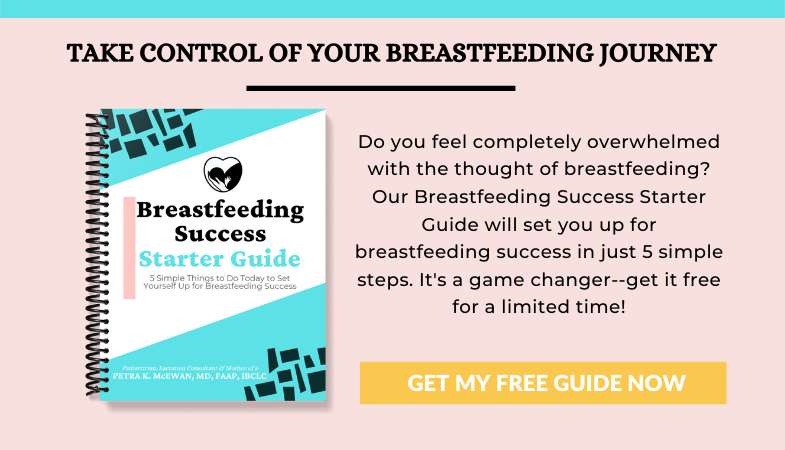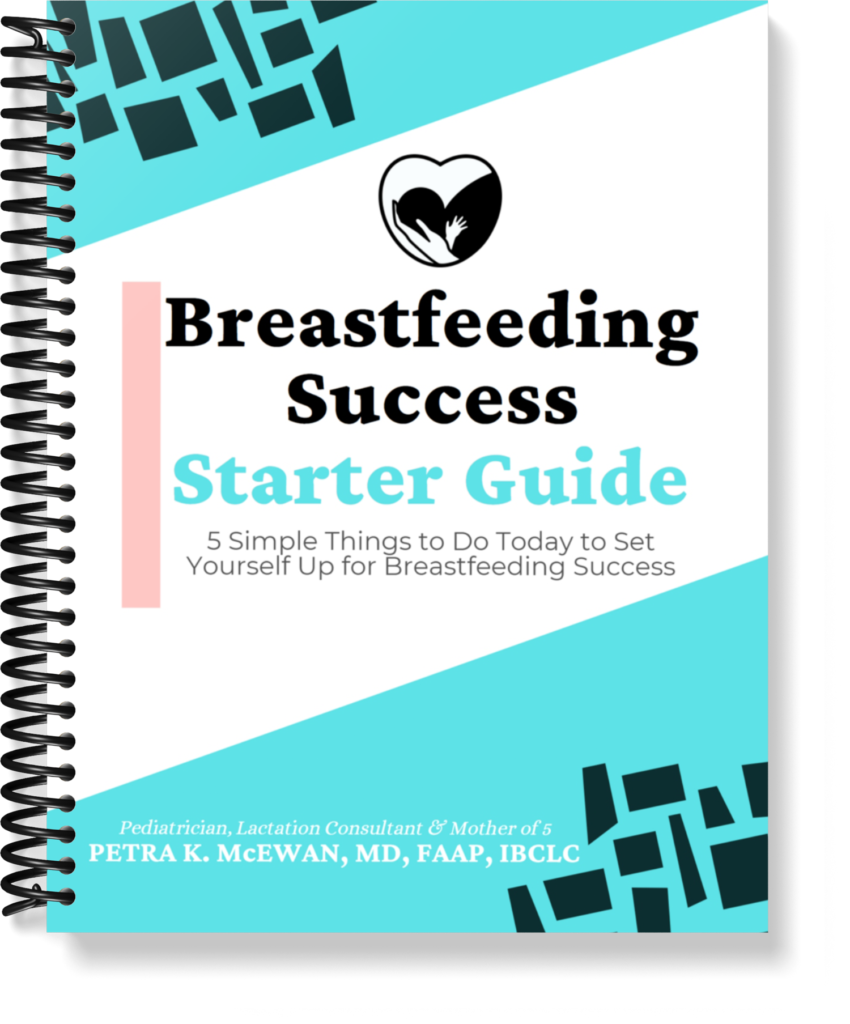Breastfeeding is an awesome gift to give to your baby. Although it has loads of benefits, it still isn’t always easy. Combine breastfeeding and returning to work, and things get that much more difficult. I’ve had to return to work or school as a breastfeeding mom 5 times already. Trying to keep up with feeding, pumping, and maintaining my supply for each baby was sometimes a struggle. I was at a different point in my life with each of my children, which meant a different schedule with each pumping adventure. I felt a little more prepared each time, and felt like I finally got the hang of it by baby #5. Your schedule may differ from mine, but here are some things to consider when balancing breastfeeding and pumping. This is especially designed for working moms.
Breastfeeding schedule
From the very beginning, I recommend breastfeeding your baby on demand – typically every 2-3 hours at the start. I know you’ve probably been told to feed for 15-20 minutes on each breast per feeding. This is fine early on when you’re just producing colostrum. But once your milk is in, I recommend getting a full feeding from one breast before switching to the other side. This could be 15 minutes, 20 minutes, 30 minutes. It all depends on your breasts! The majority of the time, I ended up feeding from just one breast per feeding. This method helps your baby get the fatty hind milk at the end of the feeding on one breast. If you switch breasts too early, your baby may be missing out. Of course, if you’re having supply issues, I recommend offering both breasts during a feeding, to make sure your baby is full.
Since I was breastfeeding from just one side per feeding, I would many times get leakage from the opposite breast. I used the Avent Comfort Breast Shells to catch this leaking milk. I’ve heard good things about the Haakaa Silicone Breast Pump, too, but haven’t used it personally. Whatever milk I got from the “leakage”, I froze for another day.
Pumping schedule
There are differing opinions on when to start pumping. I recommend beginning your pumping adventure when your milk comes in. This is usually on day 3-5 after the birth of your baby. Because the milk is usually overflowing when it first comes in, your breasts will likely be really tender. It’s common to suffer from engorgement and blocked milk ducts, which can cause the milk to not flow well. Alternating between cool and warm compresses helped to relieve some of my discomfort, and helped the milk to get flowing so I could feed and start pumping!
As far as a schedule, I recommend pumping twice a day – once in the morning and once at night – while you’re still breastfeeding on demand. Since you’re feeding your newborn every 2-3 hours, it can be tough to squeeze in pumping sessions early on. I tried to plan those 2 pumps about 1-1.5 hours after I fed my baby, to still allow him to get a decent feeding the next time.
If you’ve got a clingy newborn, even pumping twice a day can be hard to schedule. My youngest seemed to feed all the time, and if I put him down, he seemed to want to feed again. It was almost impossible for me to pump! But, once I knew we got a good feeding in, and I knew he wasn’t hungry, I’d hand him off to my hubby or rock him in the swing while I got a pumping session in. These extra pumping sessions early on are so helpful for your long-term supply, and help to build up your fridge and freezer stock for when you go back to work.
Returning to work
Introducing the bottle
If you know you’ll have to go back to work after having a baby, I recommend introducing a bottle early on, once breastfeeding is established. Once you and your baby are in a good rhythm, you’ve got latching down, and feedings are going well, start practicing with the bottle. I did this just once a day while I was still home and able to breastfeed. This way, you can get the baby used to the bottle, and know how much he’ll need per feeding once you go back to work. I suggest having someone else give the bottle, so that your baby still associates you with the breast. Start with about 2 ounces in the bottle, and increase in 1/2 ounce increments until you find the right amount that makes your baby happy.
Trust me on this, my 3rd child refused to take a bottle for a month after she started daycare! Luckily, her daycare was at the hospital where I was doing my residency. But, I had to break away to go feed her until we finally figured something out. There were lots of tears from both her and me! Her teachers eventually recommended the Playtex drop-ins system with the latex nipple, and it was the only thing that worked for her! No silicone nipples. I only wished I had figured this out sooner! It’s, unfortunately, no longer available from the manufacturer, which is a bummer.
Be prepared
Going back to work as a breastfeeding and pumping mom takes some planning and preparation. To start with, there are at least 10 things that I recommend having on hand for successful pumping at work. Having a well-stocked pump back is so important. Before you go back to work, have a discussion with your employer about your pumping schedule. Remember, there are laws that protect most breastfeeding moms, to allow you to pump at work and continue to provide milk for your baby. Find out where you’ll pump. Make sure it’s an acceptable, clean, hygienic spot. Plan how long each of your pumping breaks will be. I recommend pumping for at least 15 minutes using a double-electric pump to save time. But, you should also set aside time to set up and clean your pump parts – not just pumping time.
Balancing breastfeeding and pumping is not easy.
Pumping at work
When you’re at work, you should pump whenever your baby is getting a bottle. This helps you to keep up with your baby’s natural demand. This is usually every 2-3 hours in the beginning, but should space out as your baby gets older and starts solid foods.
This was my typical breastfeeding and pumping schedule once I went back to work:
- 5:30am Pump
- 7:00am Feed
- 10:00am Pump
- 1:00pm Pump
- 4:00pm Pump
- 6:00pm Feed
- 9:00pm Feed
- 10:00pm Pump
- Then, I just fed through the night, on demand, and weaned feedings as the baby slept.
If I ran into any supply issues, I would add in pumping while driving to and from work (yes, WHILE driving!). I would also try to sneak away for an extra pumping session or two when I could, even if they were brief. Supply was one thing I struggled with at times as a working mom. You can check out My Best Tips For Increasing Breast Milk Supplyand read what worked for me.
You can do it!
Breastfeeding has always been special to me. Even though I was away from my babies when I went back to work, I always felt like I had a connection to them. I loved breastfeeding, and learned to tolerate pumping because I knew it was one thing I could continue to do for my baby while we weren’t together. Successful breastfeeding and pumping takes a lot of dedication. So, keep at it! Keep growing your baby!
Do you have any other tips for balancing breastfeeding and pumping? I’d love to hear them. Just leave them in the comments below!
Looking for more help?
If you’re experiencing any breastfeeding issues – or if you just want to make sure you’re doing things right – I’d be happy to help. Take a peek at the different types of breastfeeding consultations I offer, and request an appointment when you’re ready. I’m here for you and all your breastfeeding needs!
The post originally appeared on Wifey Mommy Doc, a blog for working wives and moms – focused on helping women find balance in their many roles.
If you love these tips, be sure to check out my 75+ page digital library, filled with step-by-step instructions and the tools you need to learn the basics and adapt to life while breastfeeding, troubleshoot breastfeeding problems, go back to work while breastfeeding, wean – and so much more!





